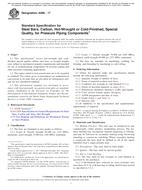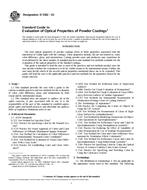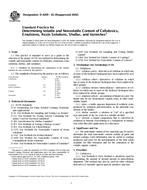1.1 This practice covers four procedures for separation and qualitative identification of poly(vinyl chloride) (PVC) contamination in poly(ethylene terephthalate) (PET) flakes.
Note 1 – Although not presented as a quantitative method, procedures presented in this practice may be used to provide quantitative results at the discretion of the user. The user assumes the responsibility to verify the reproducibility of quantitative results. Data from an independent source suggest a PVC detection level of 200 ppm (w/w) based on an original sample weight of 454 g.
1.2 Procedure A is based on different fluorescence of PVC and PET when these polymers are exposed to ultraviolet (UV) light.
1.3 Procedure B is an oven test based upon the charring of PVC when it is heated in air at 235°C.
1.4 Procedures C and D are dye tests based on differential staining of PVC and PET.
Note 2 – Other polymers (for example, PETG) also absorb the stain or brightener. Such interferences will result in false positive identification of PVC as the contaminant.
1.5 This standard does not purport to address all of the safety concerns, if any, associated with its use. It is the responsibility of the user of this standard to establish appropriate safety and health practices and determine the applicability of regulatory limitations prior to use. For specific hazards see Section 8.
Note 3 – There is no known ISO equivalent to this practice.
Product Details
- Published:
- 02/01/2009
- Number of Pages:
- 3
- File Size:
- 1 file , 69 KB
- Redline File Size:
- 2 files , 130 KB


